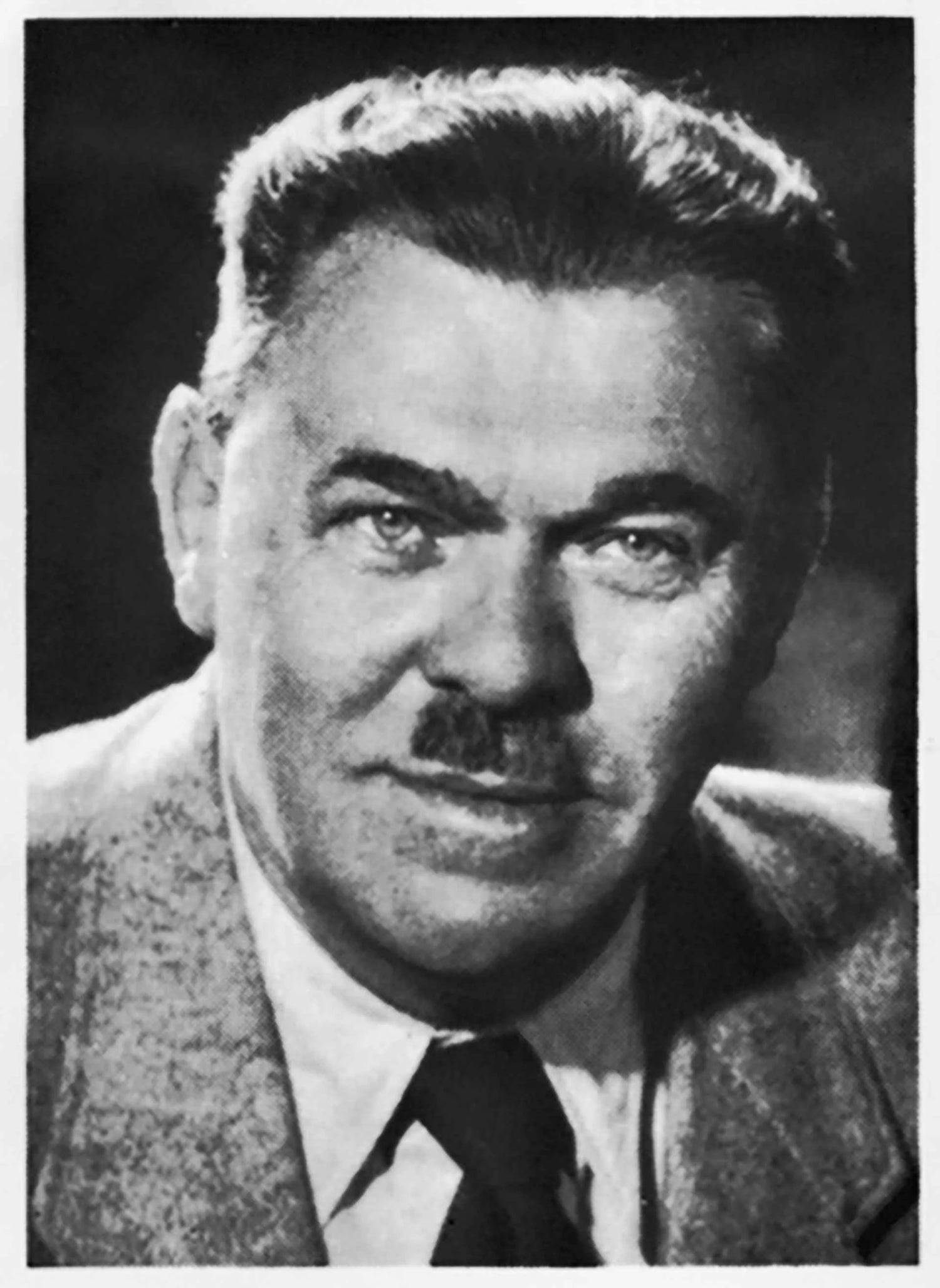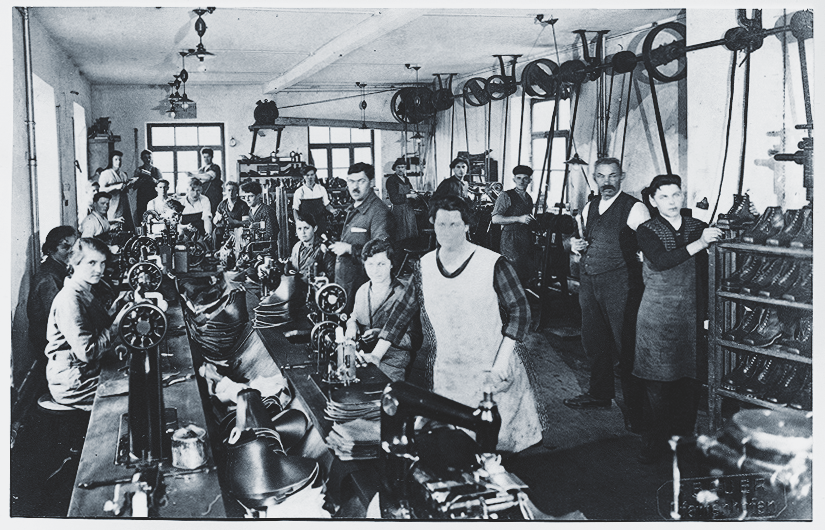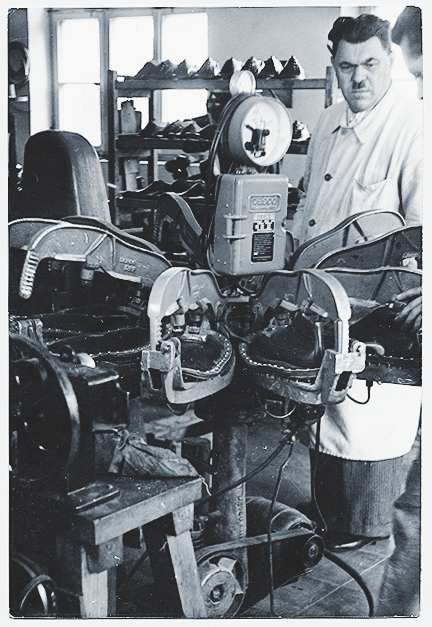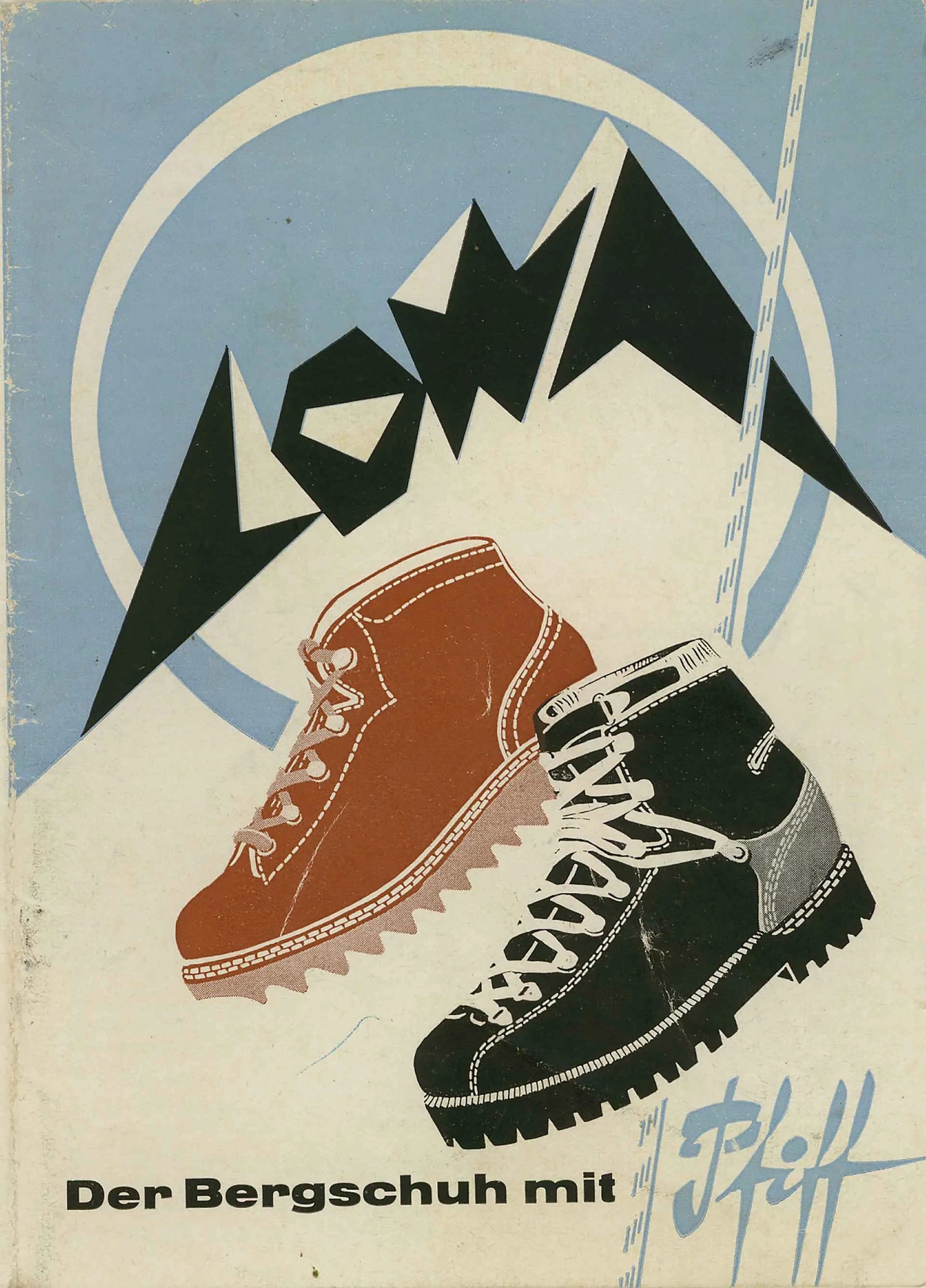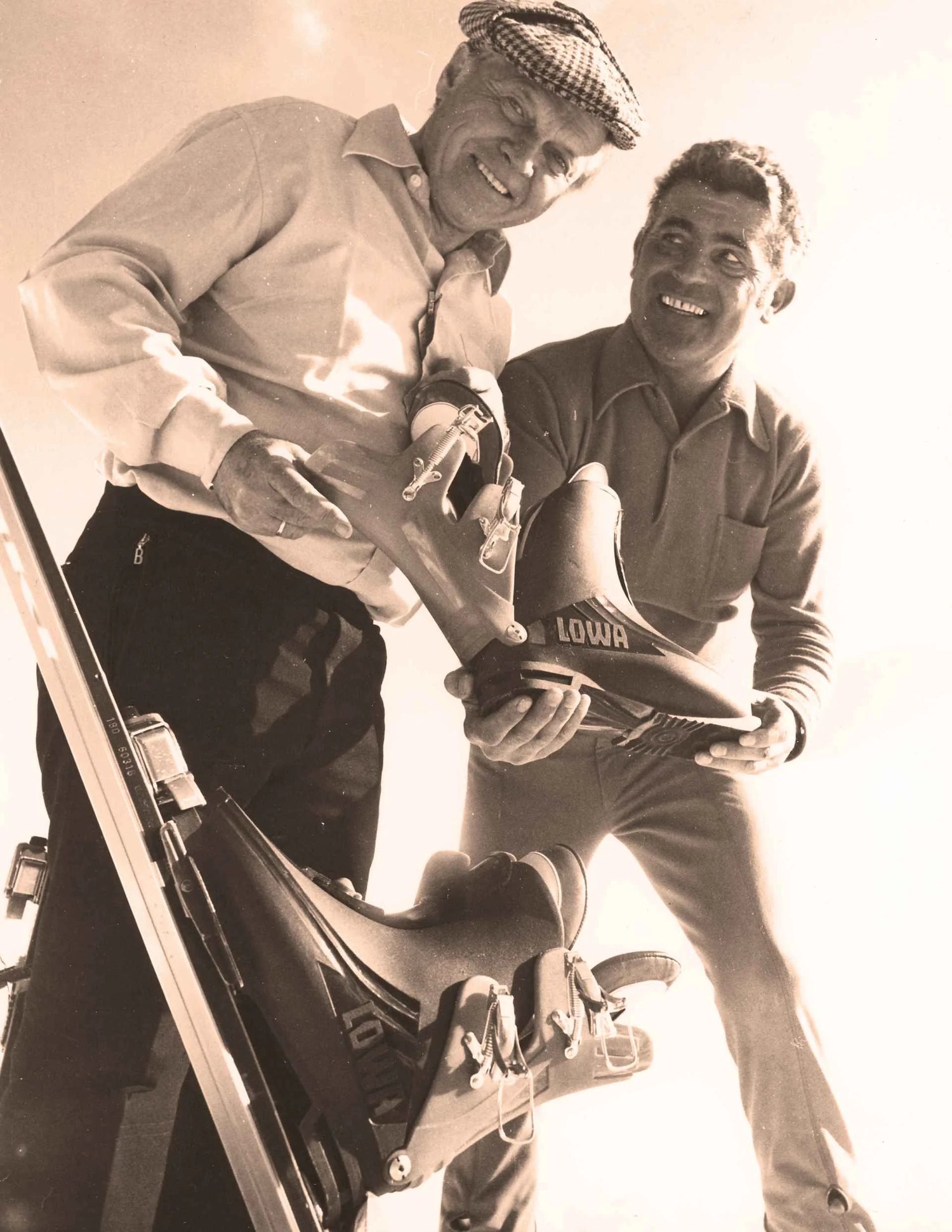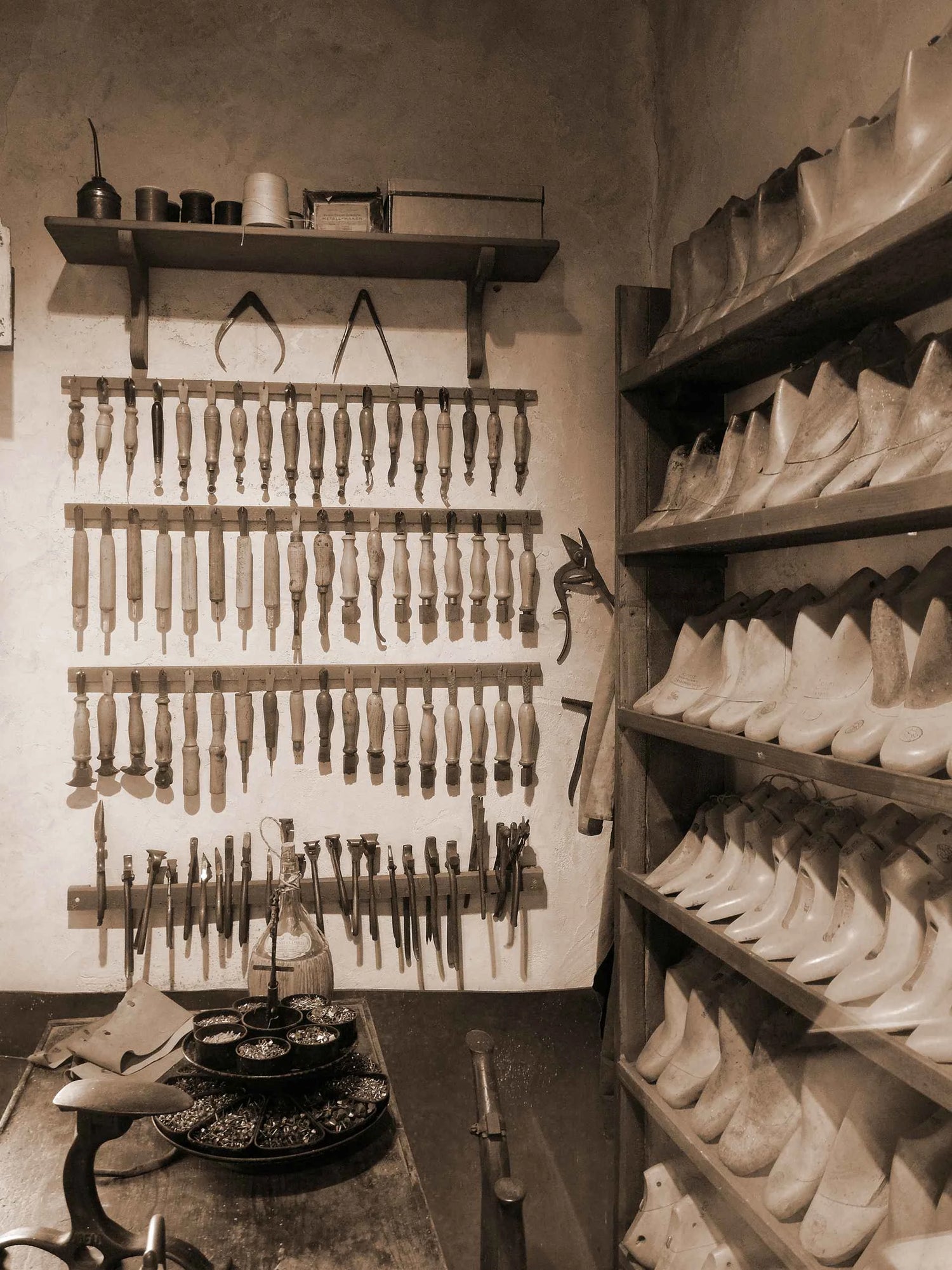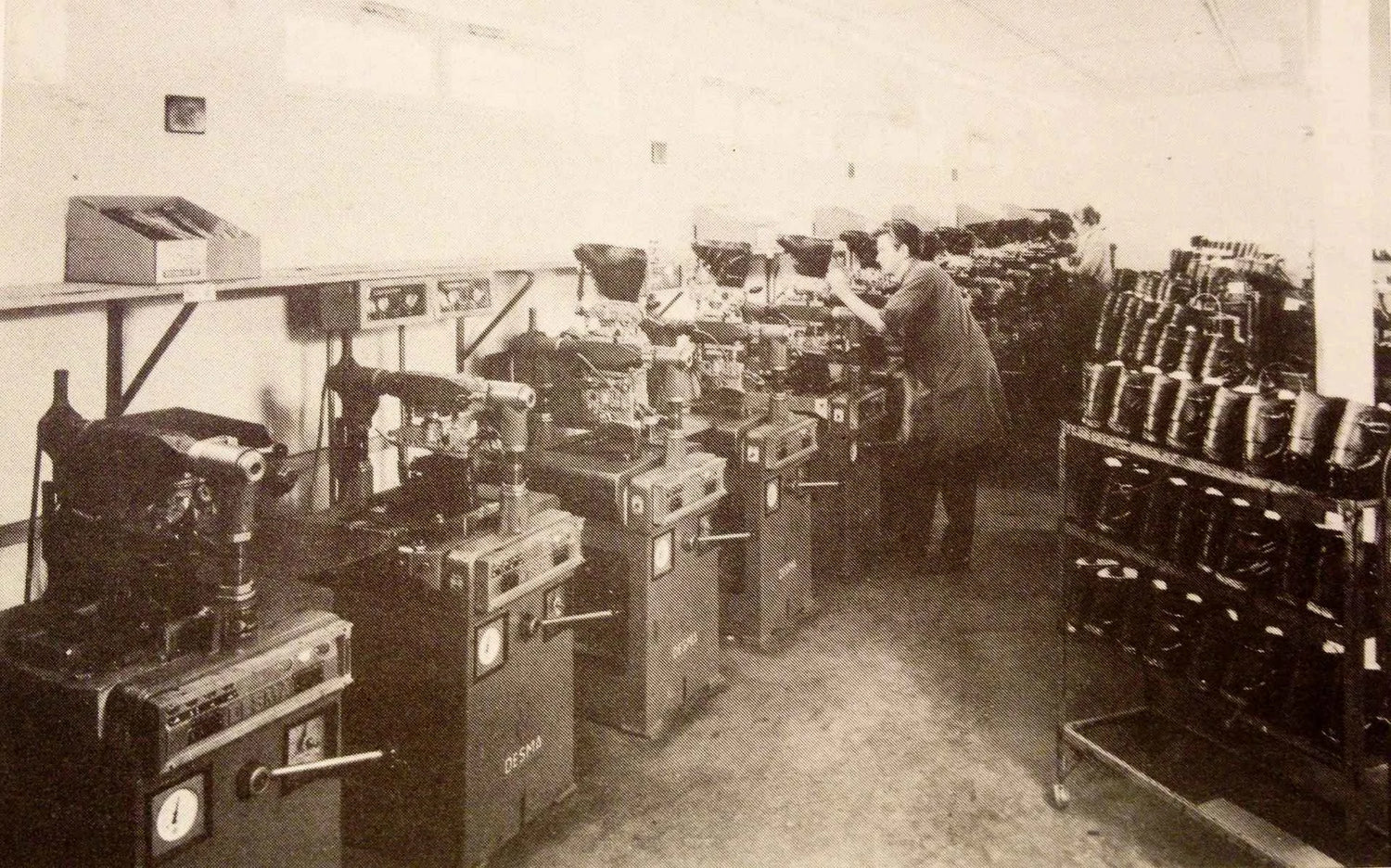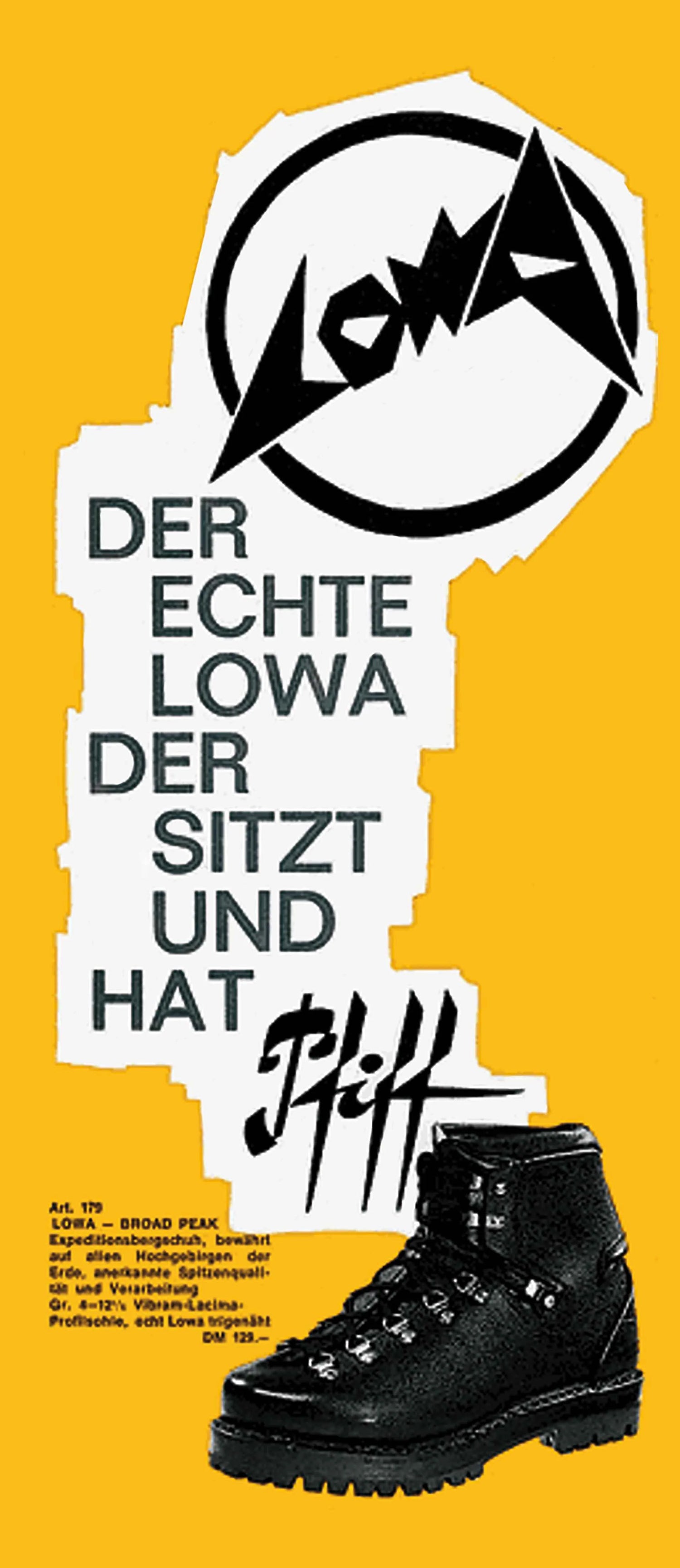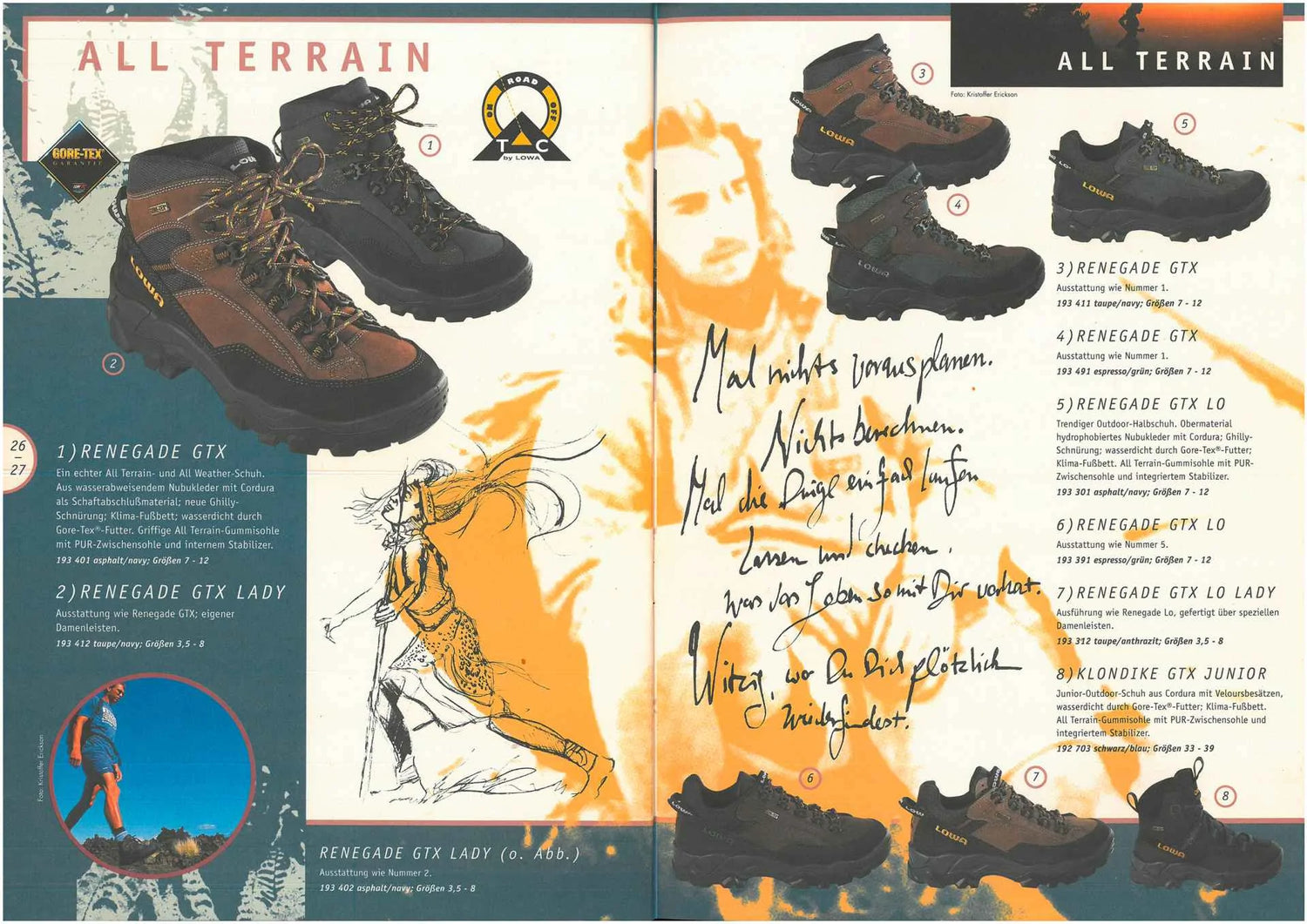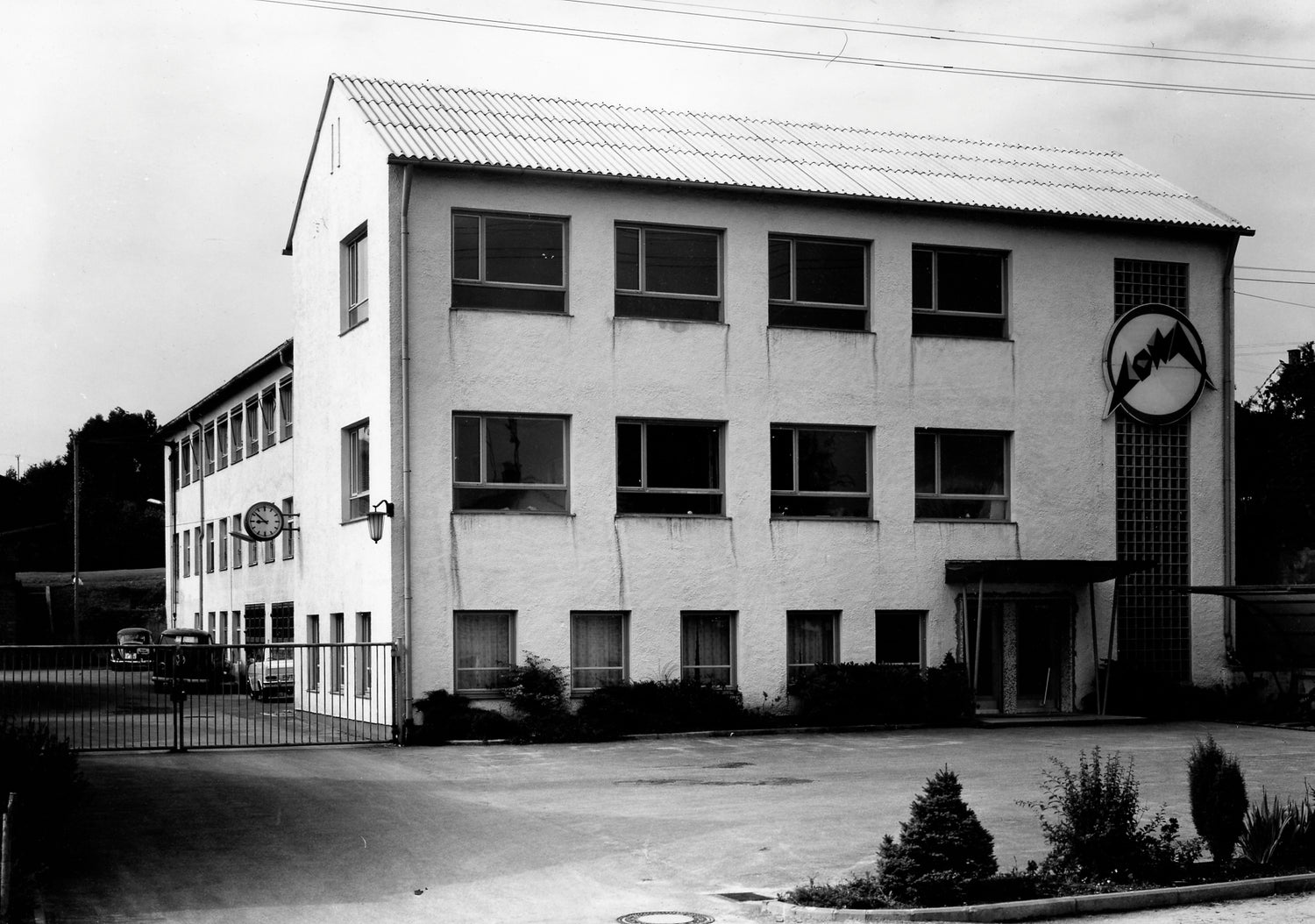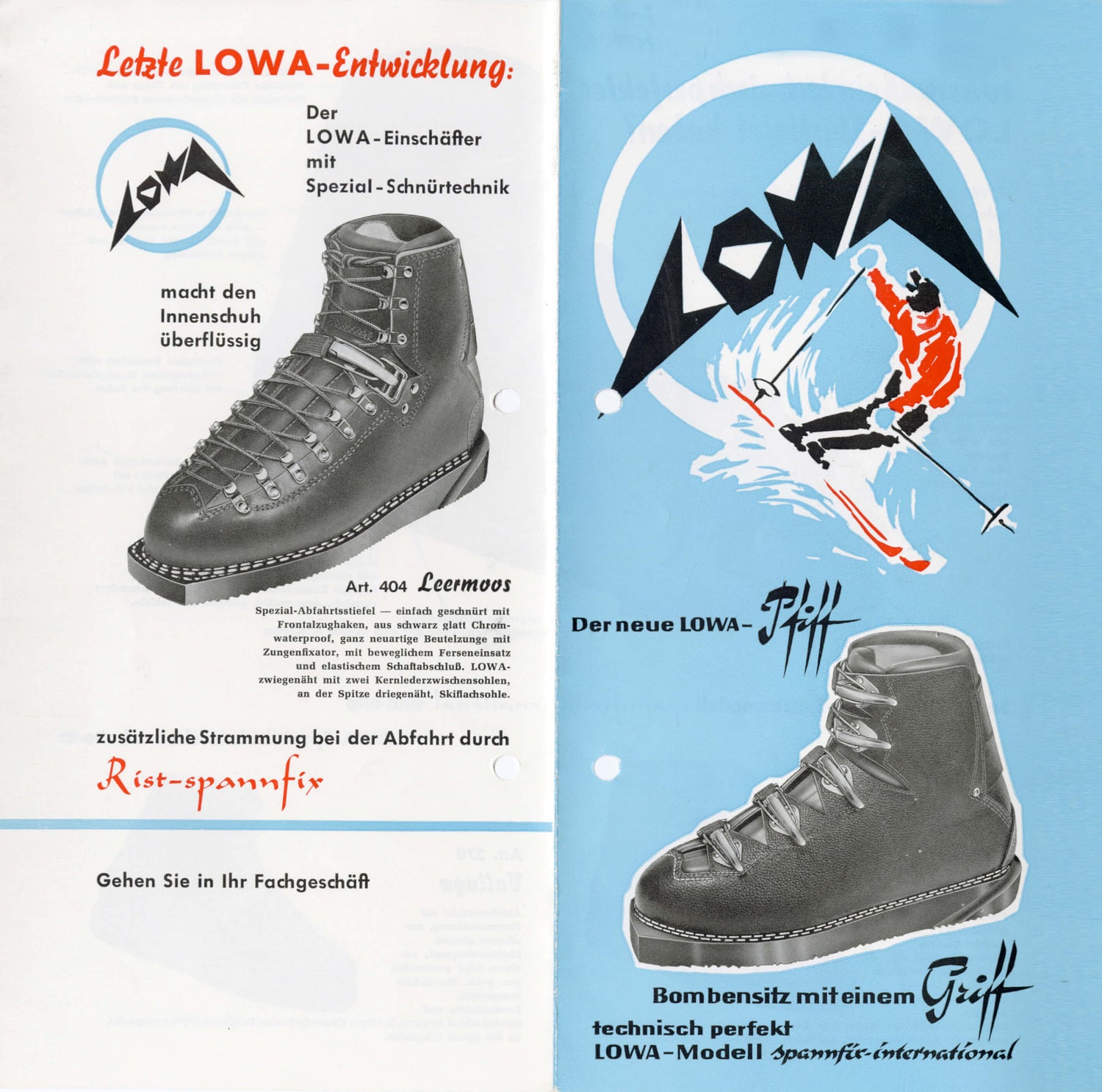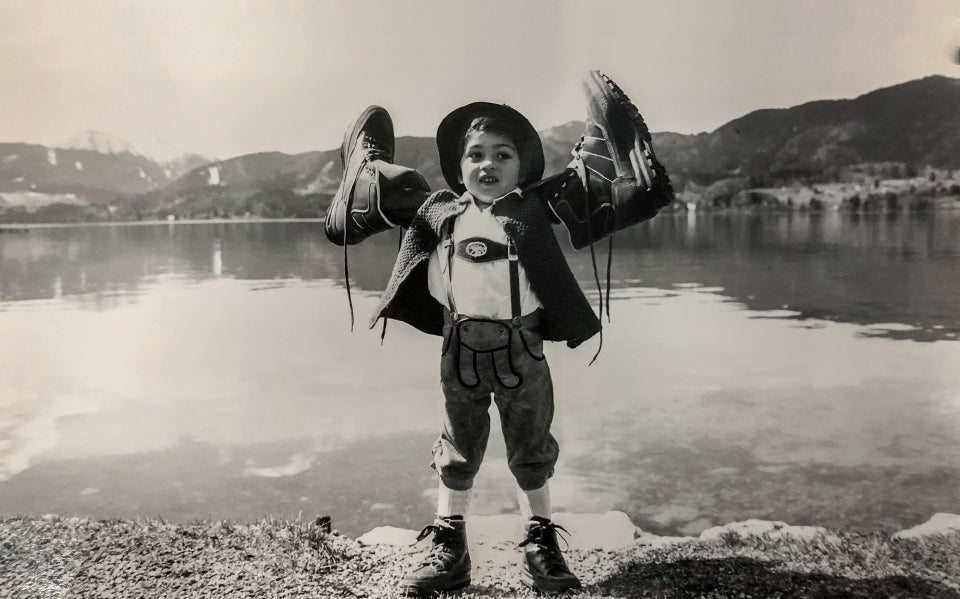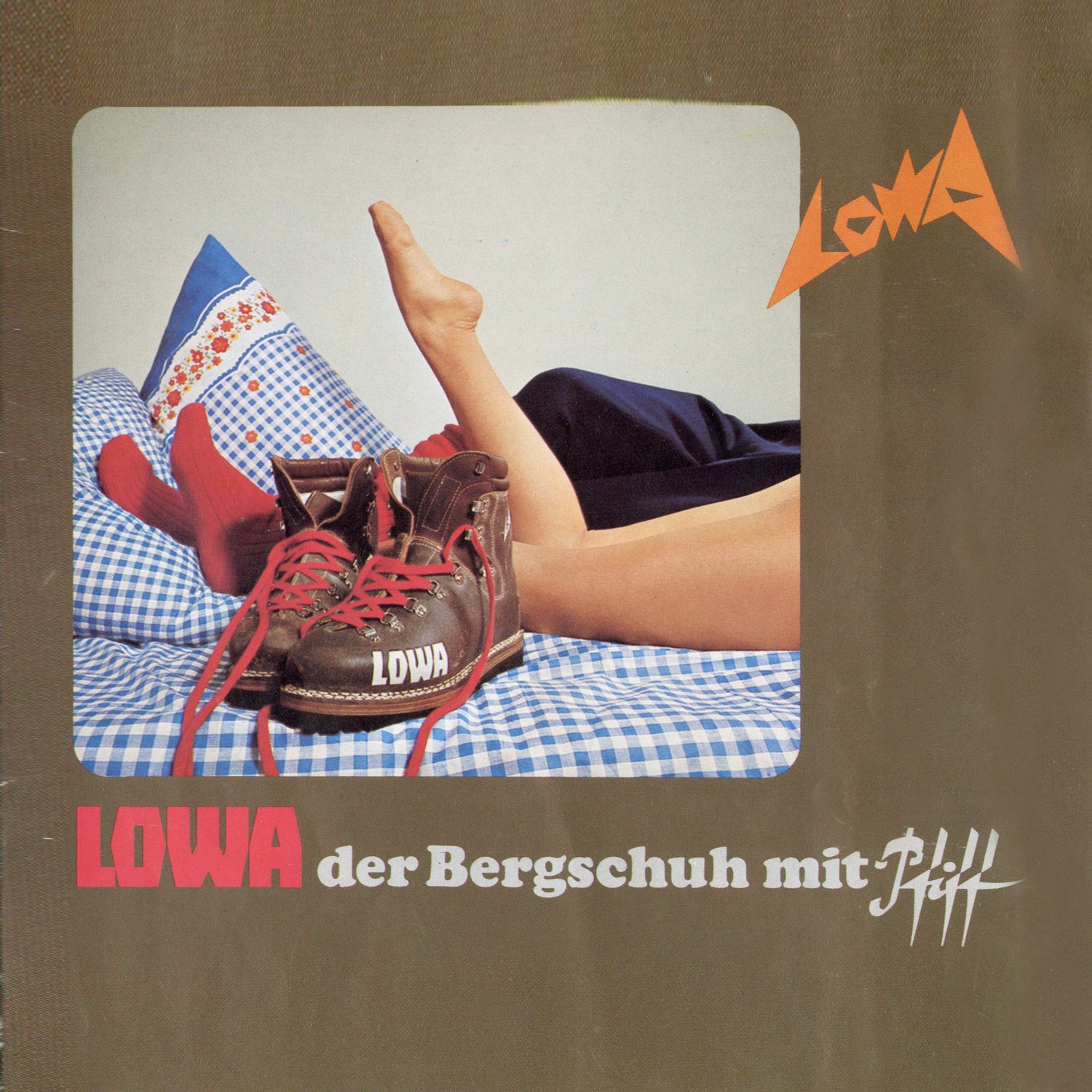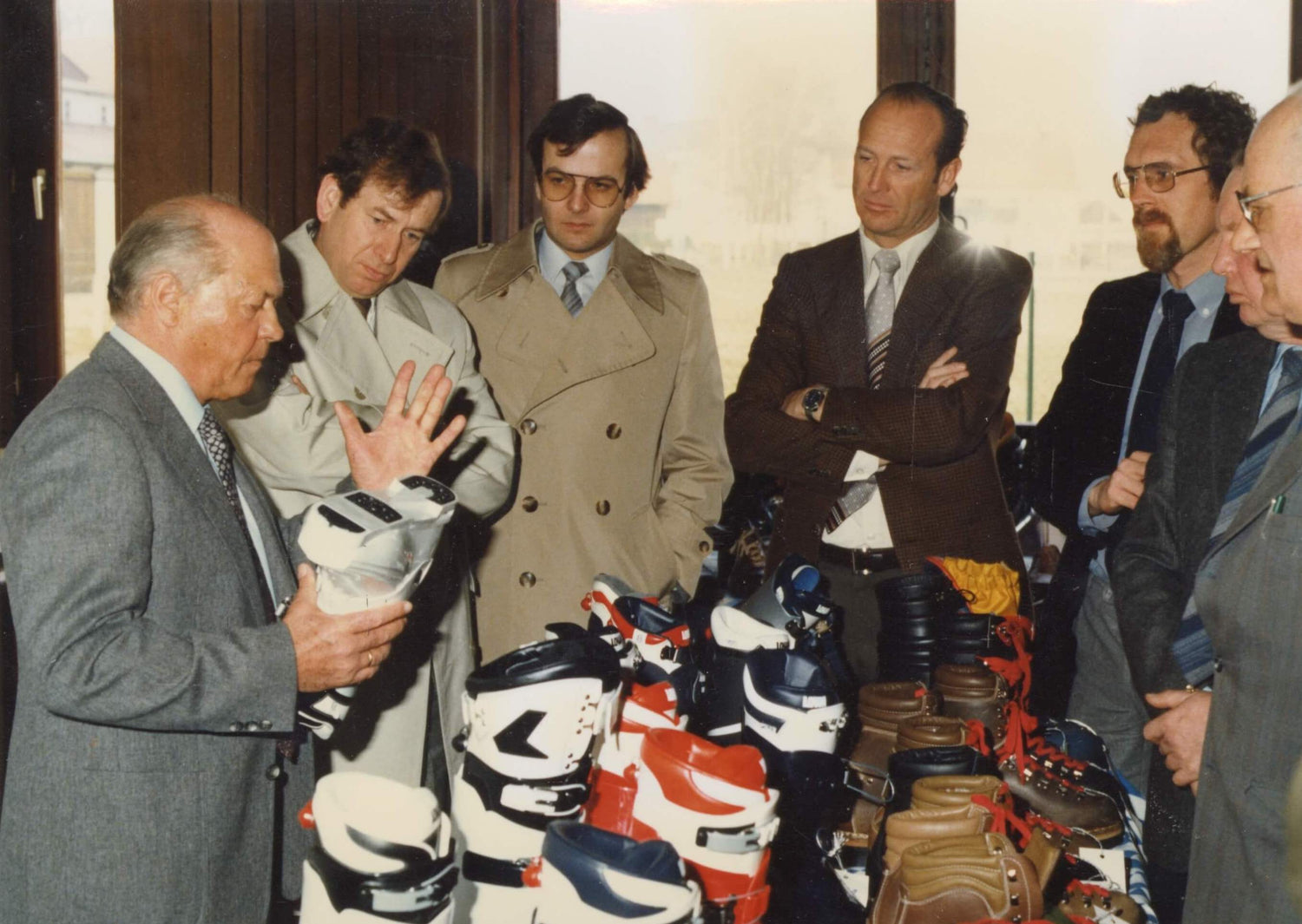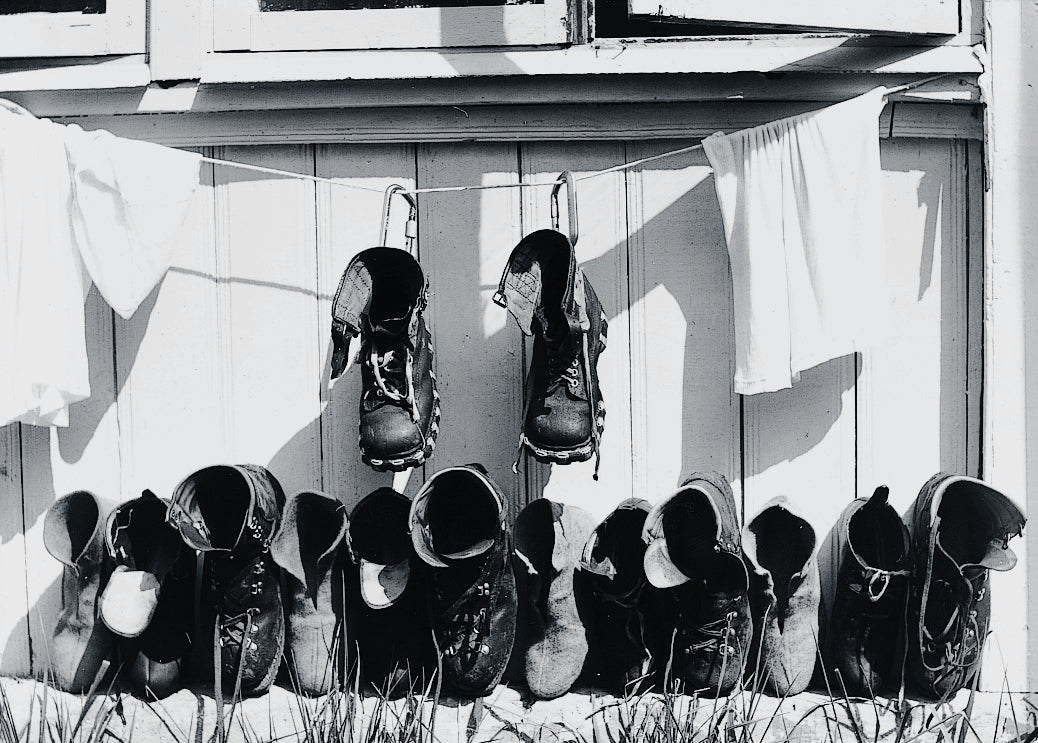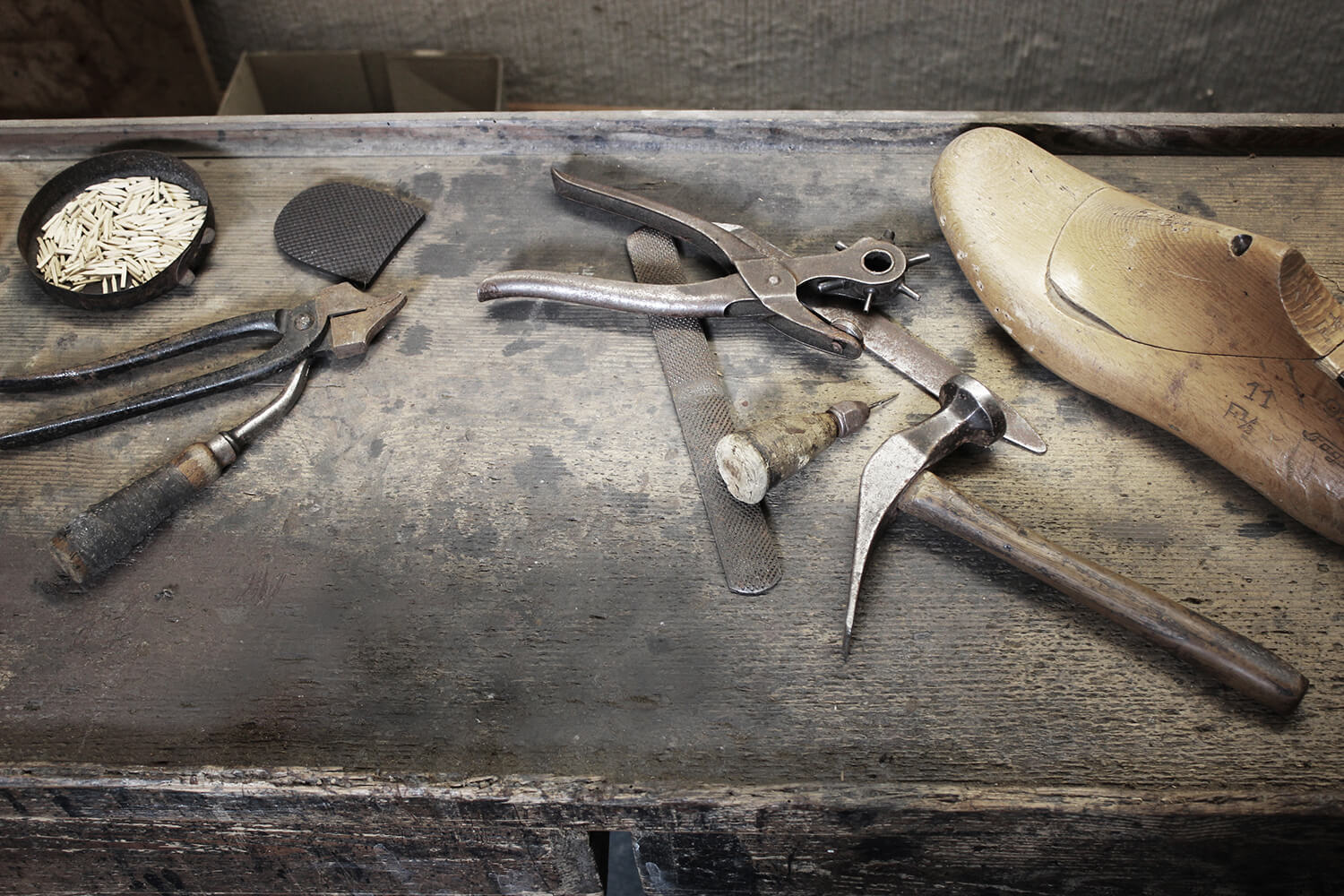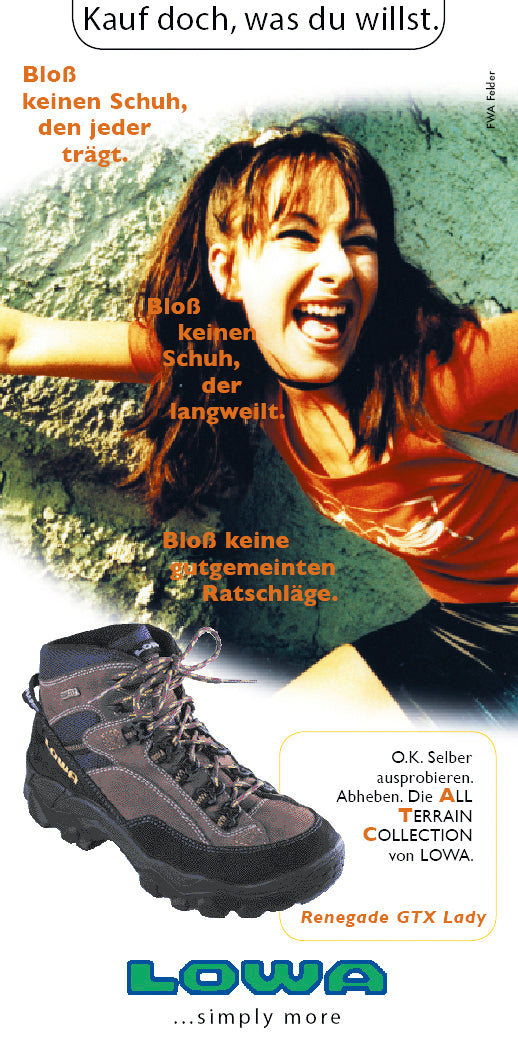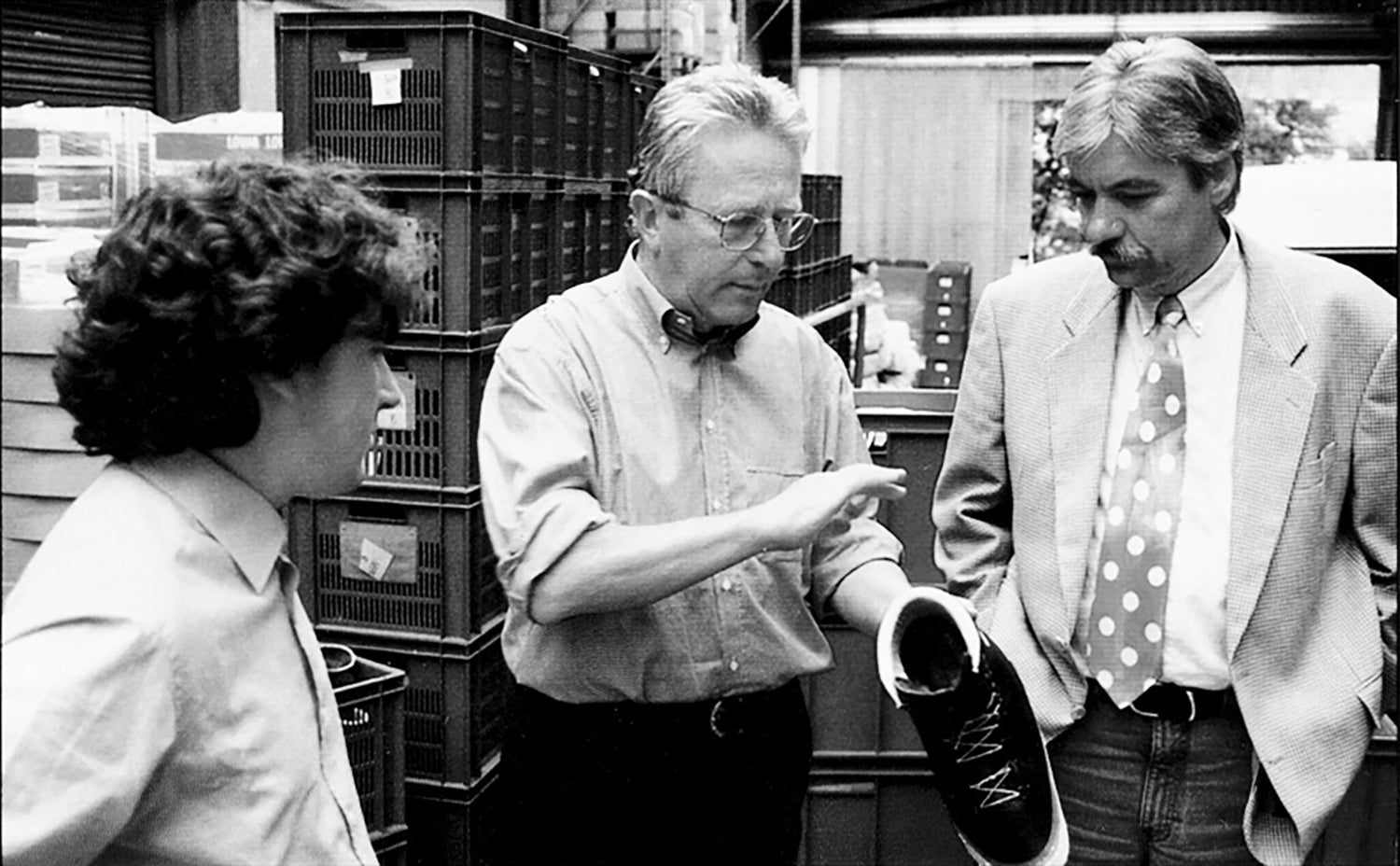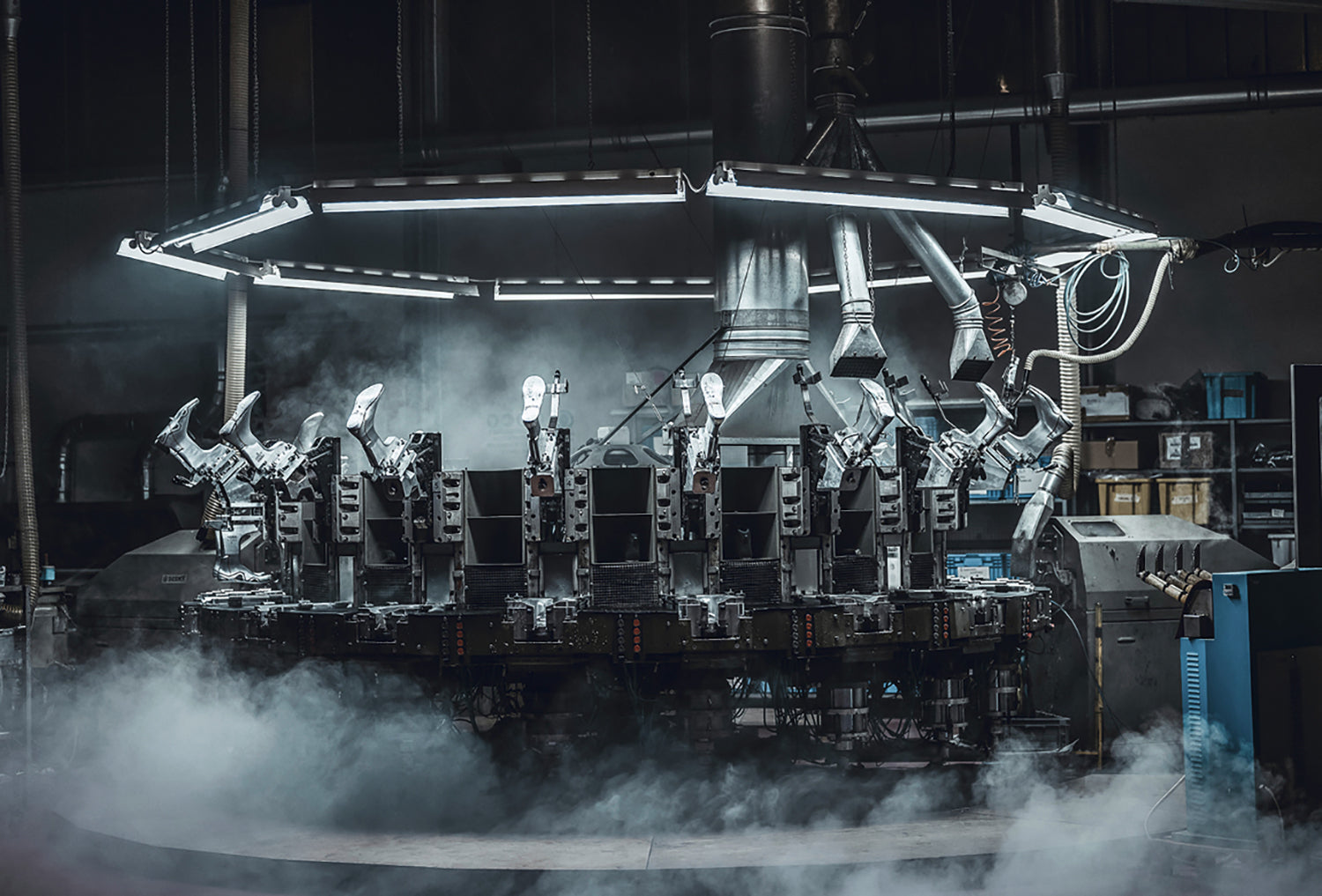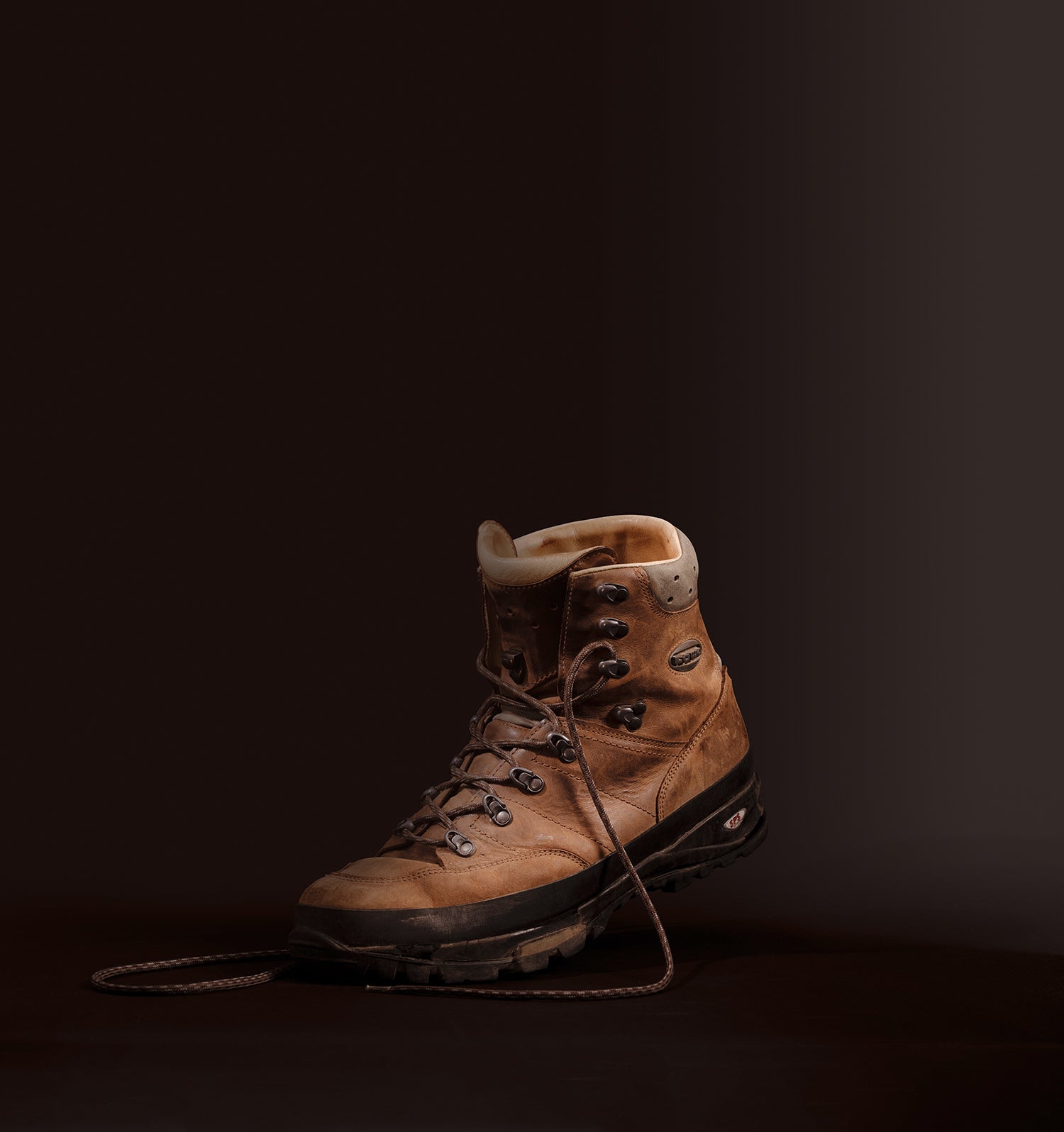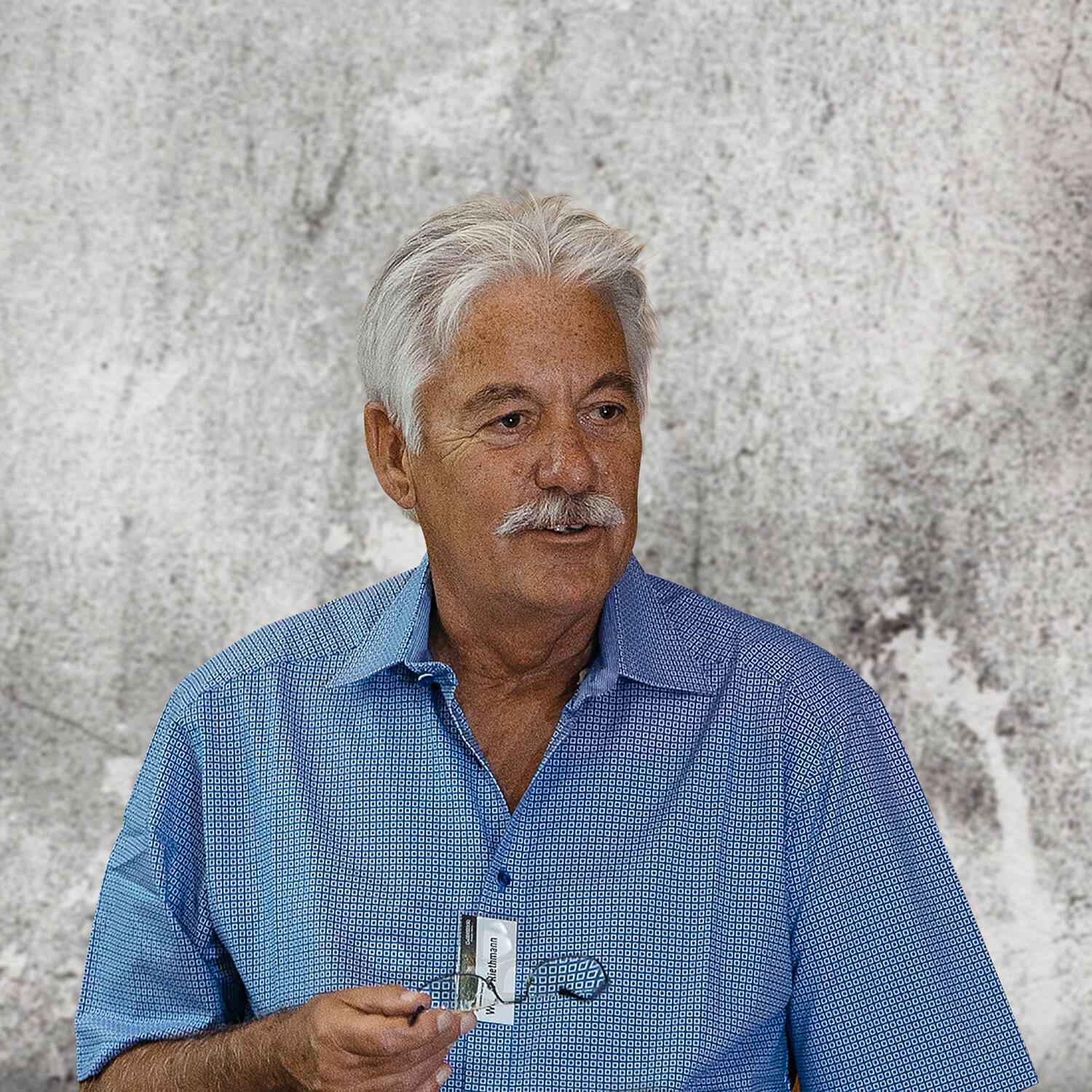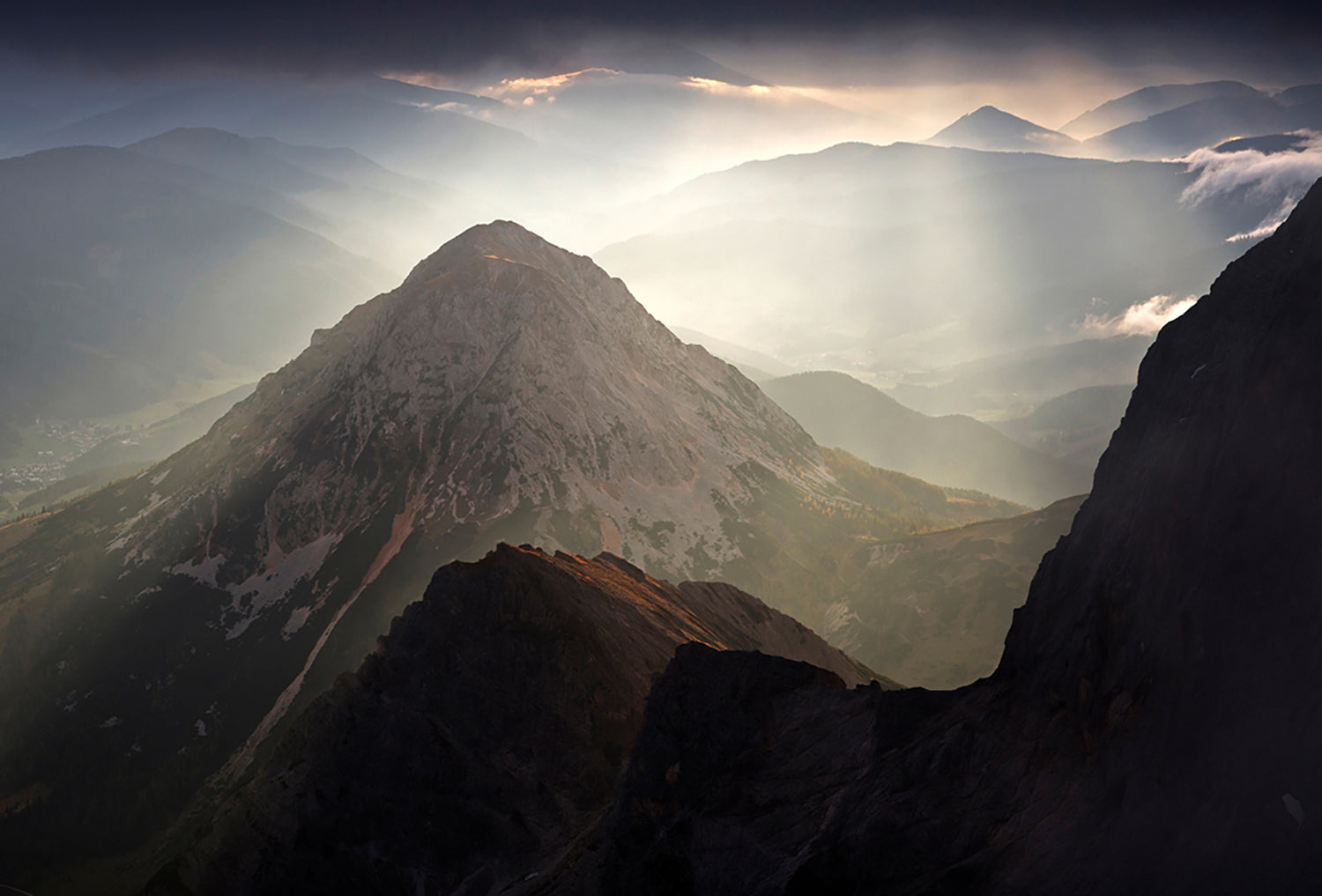-
WHERE IT ALL BEGAN
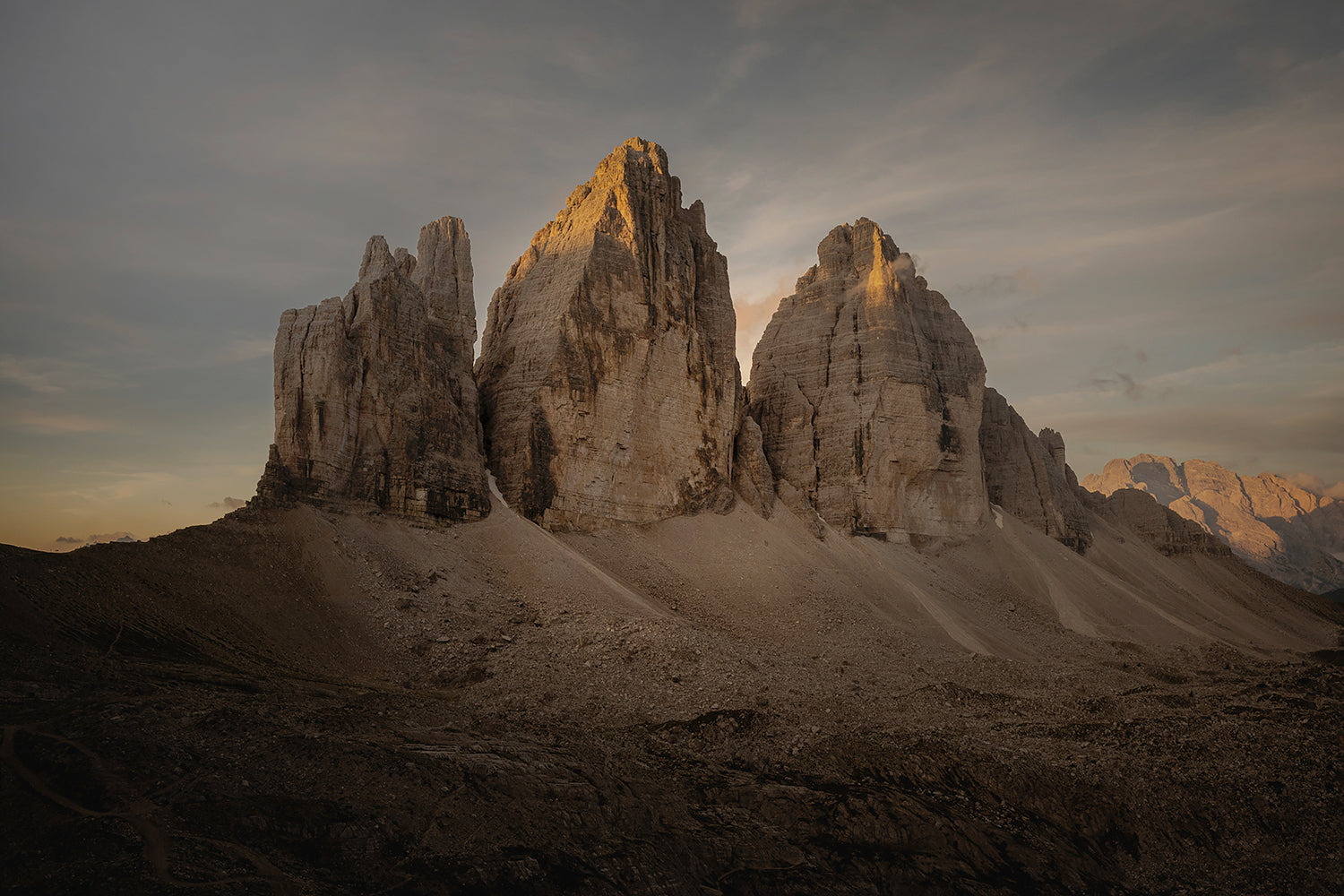
-
HOW IT ALL BEGAN
ONCE UPON A TIME, THERE WERE THREE BROTHERS
But don’t be mistaken: This is not some fairy tale. It is a true story. Lorenz, Hans and Adolf Wagner lived in the Bavarian community of Jetzendorf on the river Ilm more than 100 years ago. Their father taught the cobbler trade to them, and the three went on to make Alpine boot history as the founders of the brands LOWA, Hanwag and Hochland.
-
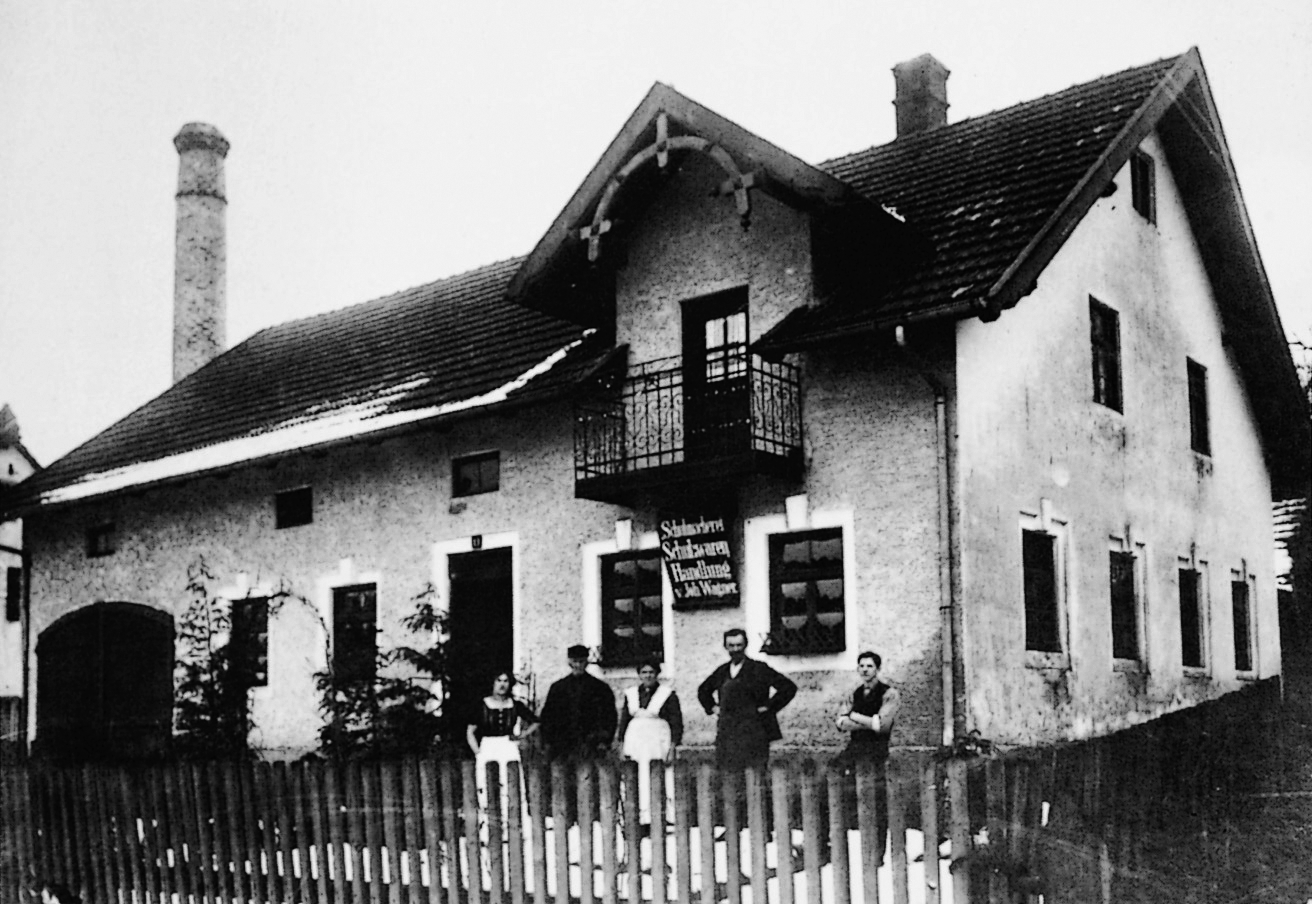
PRELUDE
WITH MUSIC
Johann, the father of the three Wagner brothers, was both a cobbler and musician He played in the first Jetzendorf band started by his brother Josef Wagner in 1850. Johann’s sons, Lorenz, Hans and Adolf, were also musical and joined the band as well. The Wagner band performed many different types of music – from lively Alpine folk music to solemn church music. Lorenz Wagner assumed leadership of the band after his uncle and cousin.
-
Lorenz later described how he used music to help lay the foundation of his cobbler shop’s future:
“It was the custom back then for country cobblers to also be musicians. I played at weddings and other occasions. I earned a nice pile of money in the process and used it buy the machinery I really needed.”
-
Within a radius of 10 kilometres...
Demand for shoes was huge in the 1920s because they were the most important piece of equipment people needed for travel. People who lived in both rural and urban areas primarily used “shanks’ mare” to get from place to place. Lorenz’s brothers also set up their own independent cobbler shops. Hans Wagner moved to Vierkirchen and his brother Adolf to Weichs, two towns that are about 10 kilometres from Jetzendorf. The band broke up, and the story of the three shoe brands began.
The brand known today as Hanwag was created in 1921. Hans Wagner supplied shoes to a Munich company and soon started producing its own drawstring and Bavarian Haferl shoes. He continuously expanded his business and began to market his shoes under the Hanwag brand name in 1952. The factory remained in family hands for its first 83 years of existence. The company’s founder passed leadership of the company to his nephew Josef Wagner. As a result, Hanwag had only two managing directors during all of these years in business. In 2004, the company became part of Fenix Outdoor AB. The “brother company” remains connected to LOWA as a friendly competitor to this day.
Adolf Wagner, the youngest of the three brothers, married in 1923 and moved to Weichs, where he took over the local cobbler shop and turned it into a shoe factory with 30 employees in the next 10 years. The mountaineering and ski boots he sold under the name “A.W.” were very successful. Like his brothers, he produced mountain infantry boots during the war years. The company got a new start after the war under the brand name Hochland. His daughter Emma assumed leadership of the company in 1955 together with her husband. The company then made a global name for itself in the 1950s and 1960s. In the mid-1970s, the shoe factory was leased to Romika, a company that produced premium-quality hiking boots there. But the competitive pressure became too much, and the factory was forced to close for good in 1981.
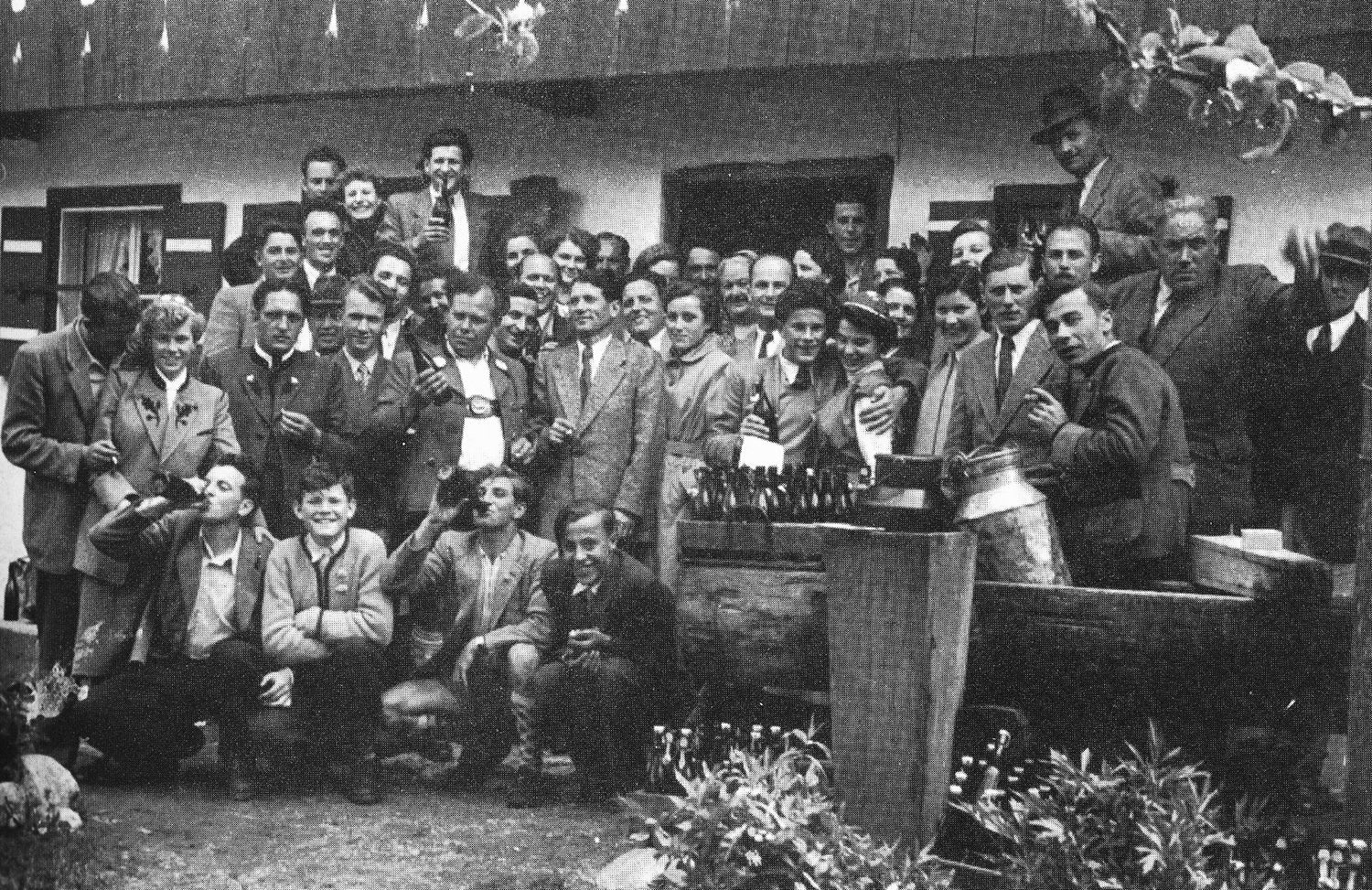
-
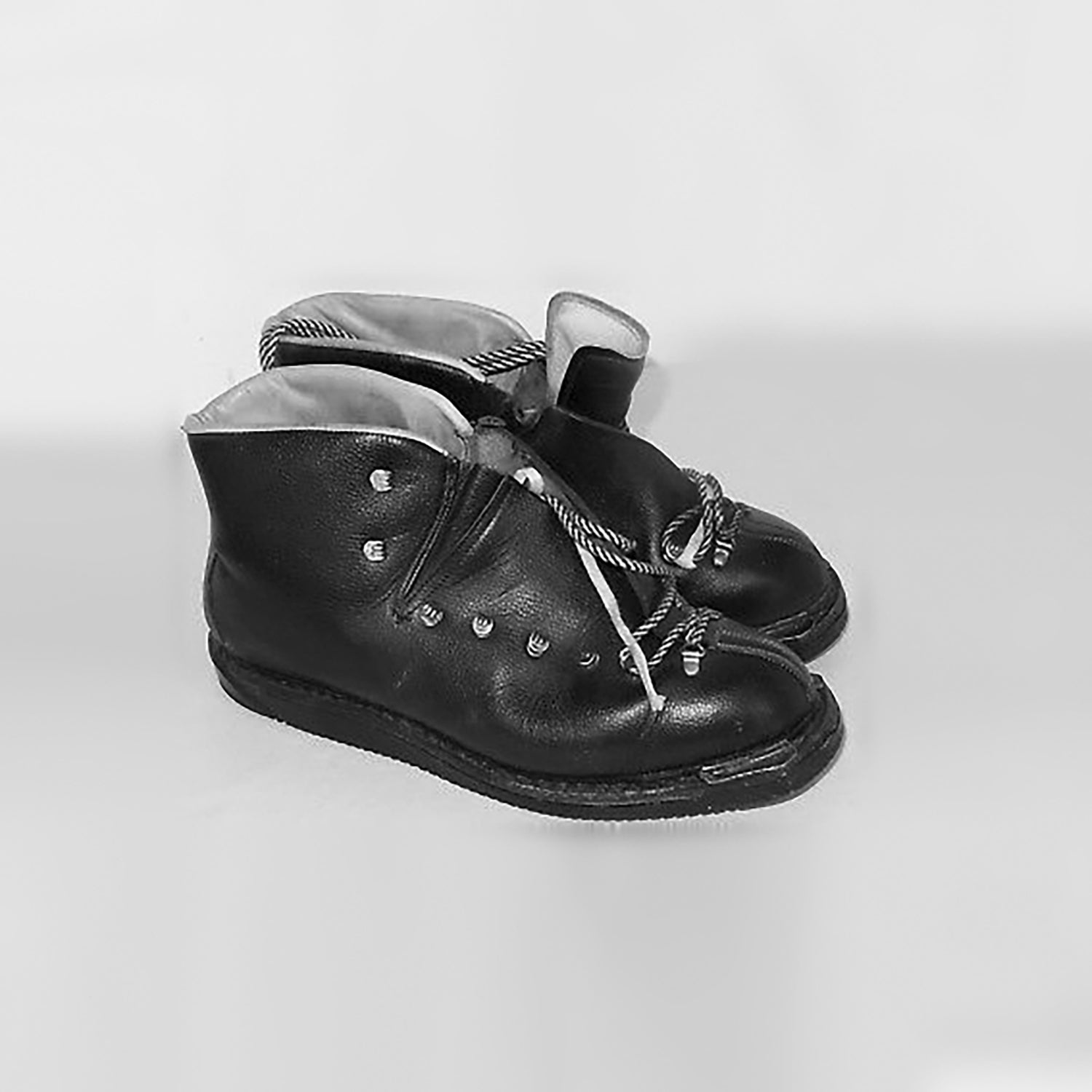
The “Ilmtaler Sportschuhfabrik”
The parallels to the stories of his brothers cannot be overlooked: As the oldest son, Lorenz Wagner, who was born in 1893, inherited the business from his parents in 1922. It included some property and the country cobbler’s shop run by his father, Johann. Lorenz had some big plans: He wanted to work with his wife, Therese, and turn the “small-time shoemaker’s shop” into a real “company”. He then bought his first machinery and established his own company in 1923, a business that had not yet been named LOWA. He most likely operated the company under his own name at the start. The company “Ilmtaler Sportschuhfabrik” appeared for the first time in records in the 1930s. Success arrived: In 1925, Lorenz Wagner employed two men who were older than 16. By 1930, the company had seven employees: six men and a woman. The work space was tight. The first factory building was then erected, 15 metres by 6 metres.
-
An ambitious apprentice, Josef Lederer, joined the company in February 1930. He said later:
-
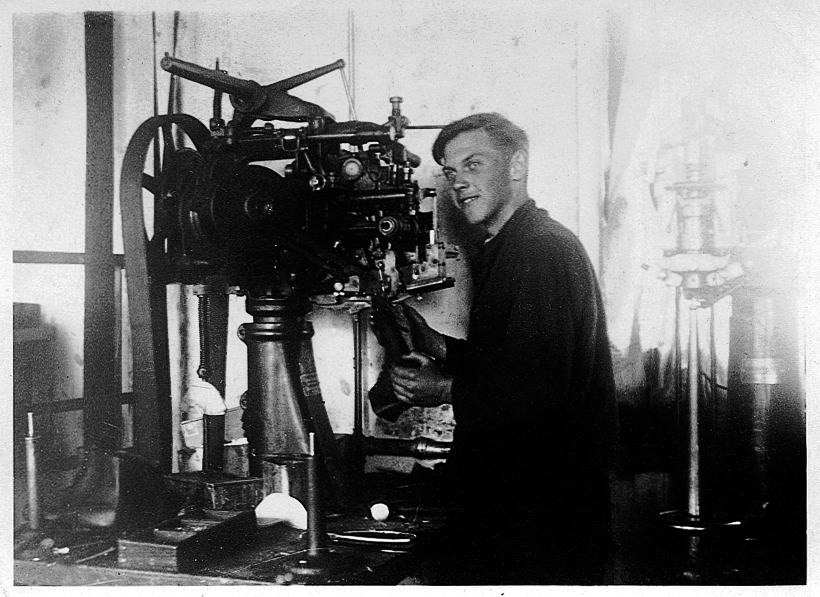
“The shoemakers worked in the attic. I was up there, too, as an apprentice. All of us ate in the house, including those who lived in town. Meals were part of our pay. Apprentices had to pay dues – in my case, I had to shine the shoes of the woman who later became my wife.”
- Josef Lederer
-
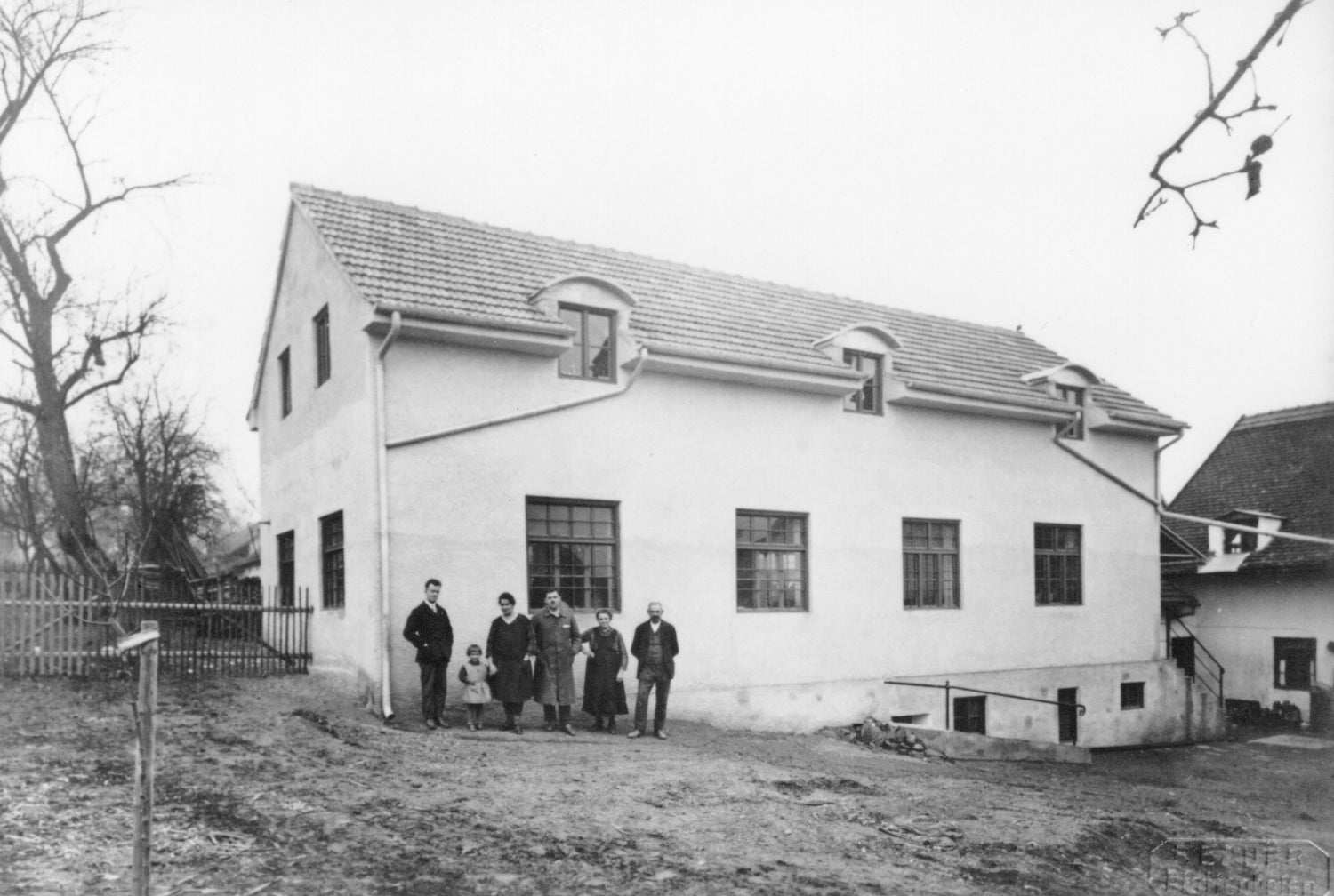
-
THE NEXT
GENERATIONSEPP AND BERTI LEDERER
Good and bad fortune were walking hand in hand when the former apprentice Josef Lederer, nicknamed Sepp, returned to LOWA. The company had run into economic problems, and Lorenz Wagner, the head of the company and its founder, had died. At the same time, Sepp fell in love with Berta Wagner and married her. Together with Berta’s brother, Josef Wagner, the new generation managed to save the company and turn it into an internationally known and successful brand.








